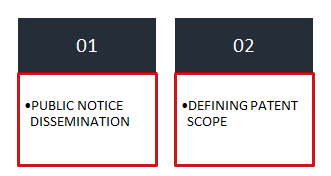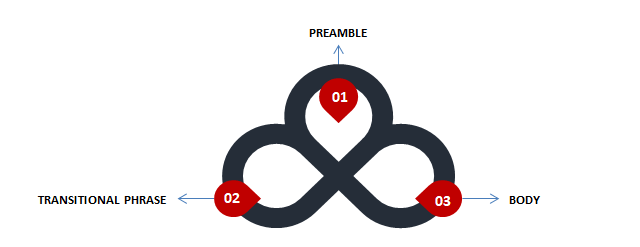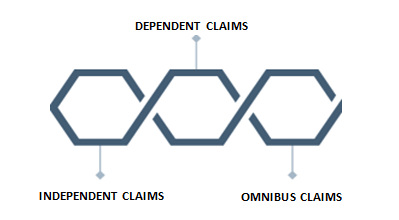Everything to Know about Patent Claims: Functions, Parts, and Types
Claims are unarguably the heart of any patent application. A patent claim states the novel aspects of the invention, thereby defining the scope up to which a patent is protected. In other words, patent claims define the confines of the patent. Therefore, every patent application must have carefully drafted claims as these play a critical role during litigation. Without claims, anyone could imitate a patented product or process without facing any legal repercussions.
Carefully drafted patent claims can smoothen the grant process and help avoid any unnecessary delays arising due to ambiguity in claim description. While drafting a patent application may appear to be a straightforward task, it is imperative to seek the assistance of skilled IP experts to avoid any hindrance in patent approval process and maximize the coverage.
This article will discuss the functions of patent claims, their parts, and different types of patent claims as per different categories. Let us first talk about the functions of patent claims to understand their need and importance.
Table of Contents
Essential Functions of Patent Claims
Every patent has one or more claims, including a single sentence elaborating what the patentee considers the patented invention. The claim has to expressly point out and claim the subject matter that the applicant regards as the invention. The regulation requires specification as well as a minimum of one patent claim. After the patent is issued, the specification, and one or more patent claims are publicly available. Claims are critical to a patent as they have multiple functions. There are mainly two essential functions of patent claims, as shown in Figure 1 below:

1. Public Notice Dissemination: The patent claim performs the function of notice dissemination as it informs the world about what the inventor wishes to protect. The claims highlight the exact scope of protection granted by the patent. The predefined and public location of patent claims, at the end of the universally available issued patent, effectuates this function. Once the patent is issued, the patent claim is publicly available.
The patent claim became critical because of the requirement for a tool to inform the public regarding the patents’ scope of protection. It is comparatively new when compared to the patent systems worldwide, including the US patent system. Before the existence of modern patent claims, the courts ascertained the scope of the patent right by identifying the essence and principle of the invention through the specification’s technical descriptions. Any conclusion about the full scope of the invention was derived from the descriptions and drawings in the patent’s specifications. It created a significant problem as courts and juries found it challenging to recognize the protected element by looking at only the specifications without any additional literature. The situation necessitated the change to add a patent claim in an application.
The public notice function is now at the center of patent law jurisprudence. Most intellectual property experts, regulatory bodies, and courts acknowledge the positive role of patent claims in informing the public of the subject matter protected by the patent grant.
2. Defining Patent Scope: Another vital function of patent claims is to help establish the scope of exclusivity granted to an issued patent. In other words, the claim defines the invention that the patent will protect. The defining function is also linked to the claim’s notice function. The patent claims define the invention’s limits and boundaries, and make the public aware of the patent’s specific scope of exclusivity. It is the most fundamental quality of the modern patent claim.
A patent claim is similar to a land description in a deed as it specifies the precise area that enjoys protection by the legal instrument. Each patent claim clearly defines an invention. If someone trespasses on exclusive rights of the patent owner as established by the law, they infringe on the patent. An infringement is determined by comparing the infringing activity to the area of exclusivity as per the claims. A victory in an infringement suit is based on finding that the alleged product or process overlaps the patent claims.
Patent claims also find practical application in determining a patent’s validity. Generally, the scope of a patent claim is dispositive in majority of patent issues. Once the subject matter has been defined, validity and infringement questions are addressed efficiently. The definition of a patent’s exclusionary power thus performs a critical function in patent law.
Now that you are familiar with the essential functions of a patent claim, let us cover the parts of a patent claim in the next section.
Parts of a Patent Claim
A patent claim is typically comprised of three essential parts (as shown in Figure 2 below) — the preamble, the transitional phrase (or word), and the body.

1. Preamble
The preamble is an initial introductory statement that states the category of the invention to be claimed. The preamble should be consistent with the invention title. For example, “a method for,” “an apparatus,” etc.
2. Transitional Phrase
Transitional phrases (or words) are connecting phrases (or words) that establish a relation between the preamble of the claim with the rest of the body. The type of transitional phrase used in the claim is used to determine whether the claim is restricted to only the elements listed or whether the claim may cover items or processes with additional features. The transitional phrases can be of two types: open-ended or close-ended. An open-ended transitional phrase means that the claim encompasses all the elements listed but may also include additional, unnamed details. In contrast, a close-ended transitional phrase implies that the claim just has the recited features (or steps in case of method), and no more additional elements. The close-ended transitional phrase limits the scope of the claim.
Frequently used transitional phrases are “comprising” and “consisting of.” The word “comprising” is a common open-ended phrase representing a broad claim. In effect, “comprising” is simply saying, “including the following elements but not excluding others.” For example, a claim to comprise X + Y covers a combination of X + Y + Z. In general, a patent drafter usually drafts claims containing a minimum number of elements. However, it may function in a variety of ways and utilize the open-ended transitional phrase “comprising” to cover the invention broadly.
However, the word “consisting of” is a close-ended phrase that indicates a more specific and narrower claim. Returning to the above example, a combination consisting of X + Y does not cover the combination X + Y + Z. Closed-ended transitional phrases are generally found in inventions related to chemical or metallurgical compositions. In such cases, no other ingredient should be available in more than trace amounts.
3. Body
The part that succeeds transitional phrases is the body of a claim. It lists all the elements, limitations or steps of the named invention. The body of the claim offers a detailed explanation of the novel aspects of the invention. It also enlists different parts of the invention and must attempt to establish the connection between them. In addition, it describes the relationship between all the claim elements.
Further, the body’s structure depends on the nature of the invention. Usually, the first feature in the body is the core of the product that other components depend on.
For example, a vehicle consisting of:
- a deck;
- a first pair of wheels that are connected to the front of the deck; and
- a second pair of wheels attached to the back of the deck.
It is advisable to separate the preamble from the transitional phrase using a comma. Also, the transitional phrase and the body are separated using a colon. Further, all the elements are separated from each other with a semi-colon, as shown below:

For example, an apparatus comprising:
- a receiver;
- a storage unit; and
- a display unit
Once you have understood the parts of a patent claim, it is also crucial to know about the types of claims. Therefore, in the next section, we will discuss the same.
Types of Claims
Patent claims are characterized by different types based on the drafting, invention type, field of invention, the structure of the claim, etc.
I. Types of Claims based on Drafting
There are three different types of claims based on drafting, as shown in Figure 3 below:

1. Independent claims
Independent claims are also known as principal claims as they provide a clear description of the novel feature(s) of the invention. Intellectual property experts suggest describing the invention concerning the prior art, and stating all novel and innovative features of the invention in an independent claim. Every patent application must have at least one independent claim.
2. Dependent claims
Dependent claims have a relatively narrower scope than independent claims and depend on one or several other claims. Generally, the claims following one or more independent claims are considered dependent claims. Moreover, a dependent claim may include multiple dependent claims. A multiple dependent claim refers to more than one claim. These are more common in the European patent system than in the US patent system. However, multiple dependent claims are acceptable in both.
3. Omnibus claims
An Omnibus claim describes an invention by reference to the whole or part of the specification, such as drawings or examples. Omnibus claims are only used when the invention statement is already mentioned in the specification. However, the United States, South Korea, China, Israel, Australia, and India do not permit omnibus claims.
II. Types of Claims based on Invention Field
There are four different types of claims based on the field of invention. These are shown in Figure 4 below:

1. Jepson claims
A Jepson claim is a product or method claim in which at least one limitation is specifically determined as a novel feature, distinguishable over the contents of the preamble. These types of claims are adopted when the invention is an improvisation of an existing technology.
For example, “A system for storing data having (…), wherein the improvement comprises:”
2. Markush claims
A Markush claim is a type of claim used for chemical and biotech inventions. These claims are used to prevent drafting of additional claims. A Markush claim enables a patent drafter to choose a particular element of the invention that may be selected from a group of features, all sharing some common characteristics.
For example, “…a metal selected from the aluminum, platinum, and copper group.”
3. Swiss-type claim
This type of claim is adopted when a new medicinal use of an already known compound or substance is to be patented. In other words, this type of claim is a formerly used claim format intended to include the first, second, or subsequent medical utilization (or indication of efficacy) of a well-known composition or substance.
Consider a chemical compound that is known generally, and the combination also has a medical use (e.g., in treating headaches). If later it is found to have a second medical use (such as combating hair loss), then this property’s discoverer may want to protect that new use by obtaining a patent for it.
For example, “use of substance X in the manufacture of a medicament to treat condition Y.”
It is important to note that such claims are not permitted in India.
4. Design claim
Design claim is used in design patent applications. A design patent application might only have a single claim that can describe the ornamental feature of the intended patent. Designs that are independent and distinct must be filed in separate applications since a single claim cannot support them. For example, an example of a design patent is described below with the design of an umbrella:
The ornamental design for an umbrella can be claimed as shown below:

III. Types of Claims based on invention
There are three different types of claims based on invention, as shown in Figure 5 below:

1. Process claims
These are the types of claims used to patent a novel method or process that gives the desired or optimal output or result. Examples of some common process patent claims are determining methods, planning, method of displaying, etc.
2. Product claims
These claims are used when a product is an invention that needs to be patented. Chemical compositions, combinations, food, and alloys are some outstanding inventions in which product claims are drafted.
3. Software claims
These are used when the claimed invention is computer software and/or hardware. These claims utilize apparatus or method claims to cover software inventions. These types of claims have been commonly used and usually allowed by the U.S. Patent Office. Under the present guidelines, it is also advisable to relate the software invention to a physical implementation or a “real world” application as the patent office continues to reject patent applications without some connection to a physical element.
Software claims should be drafted in specialized claim formats to provide an additional scope of protection. For example, the specialized claim formats may be “computer-readable media” format (explained below in example 1) and “data structure” format (explained below in example 2).
Example 1: A computer-readable storage medium featuring instruction that, when executed by a computer, allows the computer to carry out a method for using a computer system for [a specified function], the method comprising: [list the inventive method steps].
Example 2: A memory for storing data for rapid access by an application program being performed on a data processing system, consisting of: a data structure with memory storage, the data structure encompassing information located in a database utilized by the application program and consisting of:
- a first data object configured to;
- a second data object configured to; and
- a third data object configured to…
A Landmark Case for a Software Patent
Alice Corp owned four patents on computer programs and electronic methods for reducing “settlement risk” (i.e., the risk that a single party to a financial transaction will bear what it owes by using a third-party intermediary). The company accused CLS Bank of infringing on its patents.
CLS Bank filed suit against Alice Corp in the United States District Court, seeking a declaratory judgment that the claims were invalid at the time of issuance. Alice Corp. filed a counterclaim, alleging infringement.
The U.S. District Court declared each of Alice Corp’s patents invalid since the claims included abstract ideas that do not qualify for patent protection under 35 U.S.C. § 101.
Alice Corp filed an appeal against the decision in the United States Court of Appeals for the Federal Circuit (USCAFC). A panel of the appeals court set aside the conclusion of the lower court. But the members of the Federal Circuit set the case for re-argument, and there was a plurality of opinion.
Finally, the case was decided by the Supreme Court, which invalidated Alice Corp’s patents. The apex court determined that a software implementation of an escrow arrangement was not patent-eligible because it was merely implementation of an abstract idea on a computer system. In another case that took place after Alice Corp Vs CLS Bank, the court used the “Mayo Framework” (i.e., two-step analysis) to determine if a claim is eligible for patenting.
In the first step of the Mayo Framework, the court determines if the patent claim includes an abstract idea, such as a computation method, algorithm, or other general principles. If not, the claim can be potentially patentable, subject to additional requirements. Once the first step determines that the claim is patentable, the court proceeds to the next step.
In the second step of the analysis, the court determines whether the patent embodies the inventive concept. It means that the idea’s implementation should not be generic, traditional, or evident if it has to qualify for a patent.
IV. Types of Claims based on structure
There are two different types of claims based on structure, as shown in Figure 6 below:

1. Composition claims
These claims are commonly used when the invention is about the chemical nature of any element or material used.
For Example:
A copper electroplating solution consisting of:
- an alkaline solution of copper sulfate derived from 30-50 grams/liter;
- sulphuric acid, from 2-4 times the copper acetate solution; and
- an aqueous solution of a PH-modifying substrate in an amount sufficient enough to adjust the PH to a value of 3.5 to 5.
2. Mean-plus-function claims
Such claims do not include a detailed structure of an invention. Instead, they explain the means to achieve the desired function or feature. In a mean-plus-function claim, the element may be expressed in the form of steps to perform a function. Furthermore, these claims are sufficiently broad to cover all the materials or structures explained in the patent application.
For Example:
an apparatus for cooking rice, comprising:
- a means for holding rice; and
- a heater configured to heat the rice-holding means.
Conclusion
Patent claims are perhaps the most critical part of any patent application. Hence, the patent drafter should always give extra care and attention while drafting a patent claim. The more accurately the patent claim is prepared, the easier it is to protect the invention from potential infringers. The technical aspects of the invention should be explained in the claims in the best possible way. Drafting a patent is a complicated task, and failing to carry it out properly can lead to a delay in grant, or even rejection. To avoid such inconveniences, one can seek the advice/help of patent experts to gain an in-depth idea of preparing claims that offer better protection.
Sagacious IP leverages the best of technology to deliver next-generation IP solutions for its clients. It has helped companies, law firms, and other institutions in register, defend and monetize their intellectual property. The company also has vast experience with patents. Whether you are a business owner or an inventor, Sagacious IP’s team of patent drafting experts can help boost your chances of patent approval. They strive for the broadest possible coverage to ensure that no third party can bypass your grant. Sagacious IP also has subject matter experts who work alongside patent drafters to ensure accuracy from a technical viewpoint. Click the link above to know more about the patent drafting service.
– Aastha Arora (ICT Drafting & Prosecution) and the Editorial Team
Having Queries? Contact Us Now!
"*" indicates required fields




